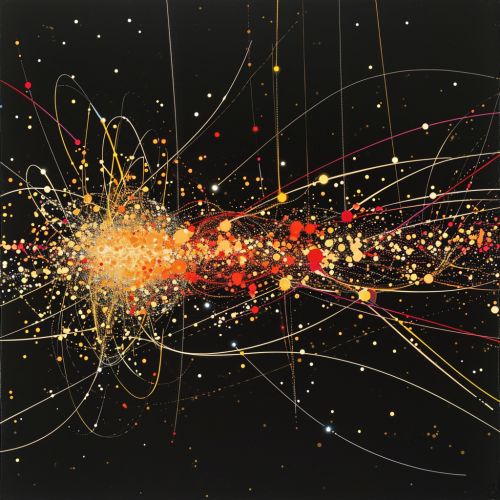Gauge Theory
Introduction
Gauge theory is a type of field theory in which the Lagrangian is invariant under certain Lie groups of local transformations. The term gauge refers to any specific mathematical formalism to regulate redundant degrees of freedom in the Lagrangian. The transformations between possible gauges, called gauge transformations, form a Lie group—referred to as the symmetry group or the gauge group of the theory.
Mathematical Background
Gauge theories are usually discussed in the language of differential geometry. In this context, the gauge group G is a Lie group, and we are given a principal G-bundle P over a four-dimensional base manifold M, which is typically taken to be the spacetime of the theory.
The connection form, or the gauge field, is a Lie-algebra valued 1-form on P, which serves as the fundamental dynamical variable in the theory. The curvature of this form gives the field strength of the gauge field, which appears in the Lagrangian of the theory.
Gauge Symmetry
In physics, a gauge symmetry is a type of symmetry in which the system—described by a Lagrangian—does not change under local transformations of the variables. These transformations, which form a Lie group, are called gauge transformations. The associated conserved quantity is called a gauge charge.
Gauge Theories in Physics
Gauge theories are important in particle physics and are central to the current understanding of the fundamental forces. The standard model of particle physics is a gauge theory, and it describes the electromagnetic, weak, and strong interactions.
Electromagnetic Gauge Theory
The electromagnetic field can be described as a gauge theory with the symmetry group U(1). This is the simplest type of gauge theory and serves as a prototype for more complicated theories. The gauge field in this case is the four-potential of electromagnetism.
Non-Abelian Gauge Theories
Non-Abelian gauge theories, also known as Yang-Mills theories, are gauge theories in which the gauge group is non-Abelian. The standard model of particle physics is a non-Abelian gauge theory with the gauge group U(1) × SU(2) × SU(3).
Quantum Gauge Theories
Quantum gauge theories are gauge theories that have been quantized. These theories, also known as quantum field theories, are the basis of our current understanding of particle physics.
Gauge Fixing
Gauge fixing denotes a mathematical procedure for coping with redundant degrees of freedom in gauge theories. It is essential in the quantization of gauge theories, and it is necessary for computations in the practical applications of gauge theories.
See Also
- Quantum Field Theory
- Standard Model
- Yang-Mills Theory
- Quantum Electrodynamics
- Quantum Chromodynamics


Note: The article is a brief overview of the topic and does not cover all aspects of Gauge Theory. For a more detailed understanding, readers are encouraged to explore the hyperlinked topics and the recommended articles in the "See Also" section.
